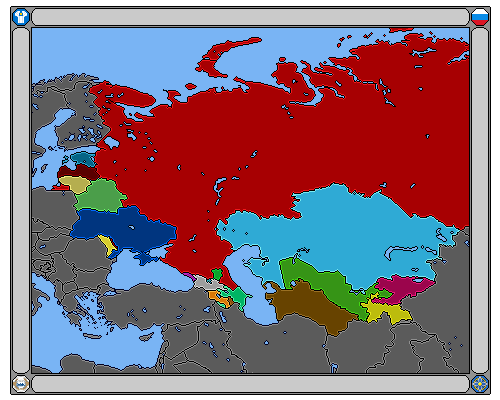HOME | DD
 BonesRobert — Syrian State Through the Century
BonesRobert — Syrian State Through the Century

#borders #egypt #france #historical #history #israel #kurds #lebanon #map #maps #pixelart #syria #turkey #syriancivilwar #baathism #lebanesecivilwar #mapsandflags
Published: 2023-07-09 22:40:05 +0000 UTC; Views: 2522; Favourites: 34; Downloads: 3
Redirect to original
Description
Maps showing the states of Syria through a century.1922: Under the French Mandate of Syria and Lebanon, the territories that form this mandate included the State of Damascus, the State of Aleppo, the State of Jabal al-Druze, the Alawite State, and Greater Lebanon. The Syrian Federation would be formed from the State of Damascus, the State of Aleppo, and the Alawite State lasting from 1922 to 1925.
1925: The State of Syria was established on January 1st, 1925 becoming the successor to the Syrian Federation. However the Alawite State had seceded from the federation before the creation of the State. The same year the Great Syrian Revolt would unfold in an attempt to end the French rule in the region.
1938: Still under the French Mandate, the First Syrian Republic would be formed in 1930 by the following states: the State of Syria, the Alawite State, and the State of Jabal al-Druze. In 1938, the assembly in the Sanjak of Alexandretta had declared their independence and thus was formed into Hatay State. The Hatay State would be short-lived as the assembly in 1939 would vote to join in union with Turkey, becoming the Hatay Province. Still to this day Hatay is regarded by some Syrians as being a part of Syria.
1950: Following Syria’s defeat in the Arab-Israeli War of ’48 and a series of political takeovers, the establishment of the Second Syrian Republic was formed in 1950.
1958: With Gamal Abdel Nasser’s success from the Suez Crisis, he is viewed as a hero by the Arabs and waves of Pan-Arab unity rising across the Arab world. In Syria, support for unity was high and on February 21, 1958, both the majority of Egyptians and Syrians voted in favor of the union with Nasser as president. The following day, the United Arab Republic was formed however the politics in Syria were heavily dictated from Egypt. In response a coup in Syria in 1961 was conducted by Syrian officers, resulting in Syria regaining its independence.
1963: On March 8, 1963, the Ba’athists stages a coup led by the military officers Salah Jadid, Muhammad Umran, and Hafez al-Assad, placing Syria under Ba’ath control. Their first decree was the establishment of the National Council for the Revolutionary Command (NCRC), made up mostly of members of the Ba’ath Party.
1967: Following a coup in 1966, Salah Jadid and Hafez al-Assad ousted Michel Alfaq, Salah al-Din al-Bitar, and other Pro-Alfaqists. Ushering in a neo-Ba’athist government headed by the military and with Salah Jadid as leader of Syria. A year later Syria and its allies Egypt and Jordan would attack Israel sparking the Six Day War. By June 10th, Israel had occupied the Golan Heights
1985: Prior to the Lebanese Civil War, Syria lost once again during the October war of ’73 this time resulting in the UN Disengagement Observer Force installed in a buffer zone between Israel and Syria. During the Lebanese Civil War, Syria sent its troops in 1976, occupying the Beqaa Valley and the surrounding territories. Years later Israel would send its troops into Lebanon, securing the south and engaging with the Syrian military and its allies. In 1985, Israel would establish the South Lebanon Security Zone and support the South Lebanon Army.
2015: Syrian forces are pulled out of Lebanon, ending its occupation in 2005. In 2011 the Syrian Civil War started with the Ba’ath Regime attacking opposition protests during the Arab Spring. War escalated in 2015, resulting in the Kurds establishing control in Kurd dominated areas, radical Islamists like Al Qaeda and ISIS/Daesh taking vast amounts of territory, and the remains of the Free Syrian Army fighting around Damascus and Idlib.
2023: After years of intense fighting and the major defeat of ISIS/Daesh, the Ba’ath Regime regains control over much of southern, central, and coastal Syria. The Free Syrian Army fractured into two main factions: the US-backed Free Syrian Army, the Turkish-backed Syrian National Army, and the remaining joining other factions like Rojava and the Assad Regime. Al-Nusra and other Islamist rebel groups formed Tahrir al Sham and established the Syrian Salvation Government in Idlib. Rojava, controlling much of northern Syria, has lost territory due to Turkish intervention since 2016.
























